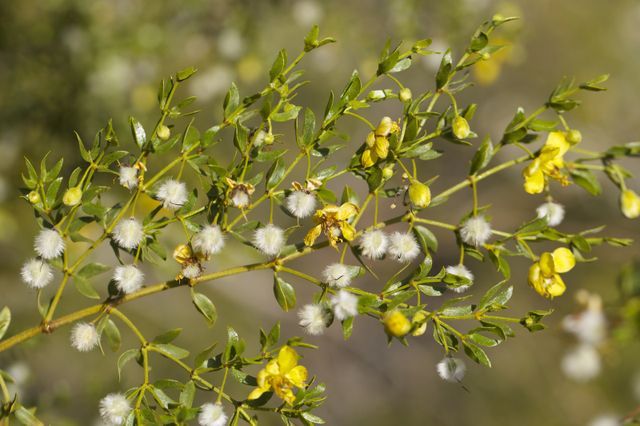 Larrea tridentata, or creosote, is one of the most prominent plants in the desert southwest. Very well adapted to intense heat and drought conditions, this plant can exude chemicals out of its roots that inhibit the growth of other plants. Small, green, double leaflets that are fused at the base are heavily coated in waxes and oils. Come spring, these shrubs will be covered in small yellow flowers that will develop into round, fuzzy fruits. Along with its characteristic grey bark, these features make this plant easy to identify. This plant can be very slow growing, taking usually 13 years to reach reproductive maturity. After it rains, this plant releases volatile oils that produce the distinctive “desert rain” smell, which is called petrichor. “King Clone,” a creosote in the Mojave Desert in California, is thought to be the oldest creosote. It could even be the oldest organism in the world at about 11,700 years old.
Larrea tridentata, or creosote, is one of the most prominent plants in the desert southwest. Very well adapted to intense heat and drought conditions, this plant can exude chemicals out of its roots that inhibit the growth of other plants. Small, green, double leaflets that are fused at the base are heavily coated in waxes and oils. Come spring, these shrubs will be covered in small yellow flowers that will develop into round, fuzzy fruits. Along with its characteristic grey bark, these features make this plant easy to identify. This plant can be very slow growing, taking usually 13 years to reach reproductive maturity. After it rains, this plant releases volatile oils that produce the distinctive “desert rain” smell, which is called petrichor. “King Clone,” a creosote in the Mojave Desert in California, is thought to be the oldest creosote. It could even be the oldest organism in the world at about 11,700 years old.

